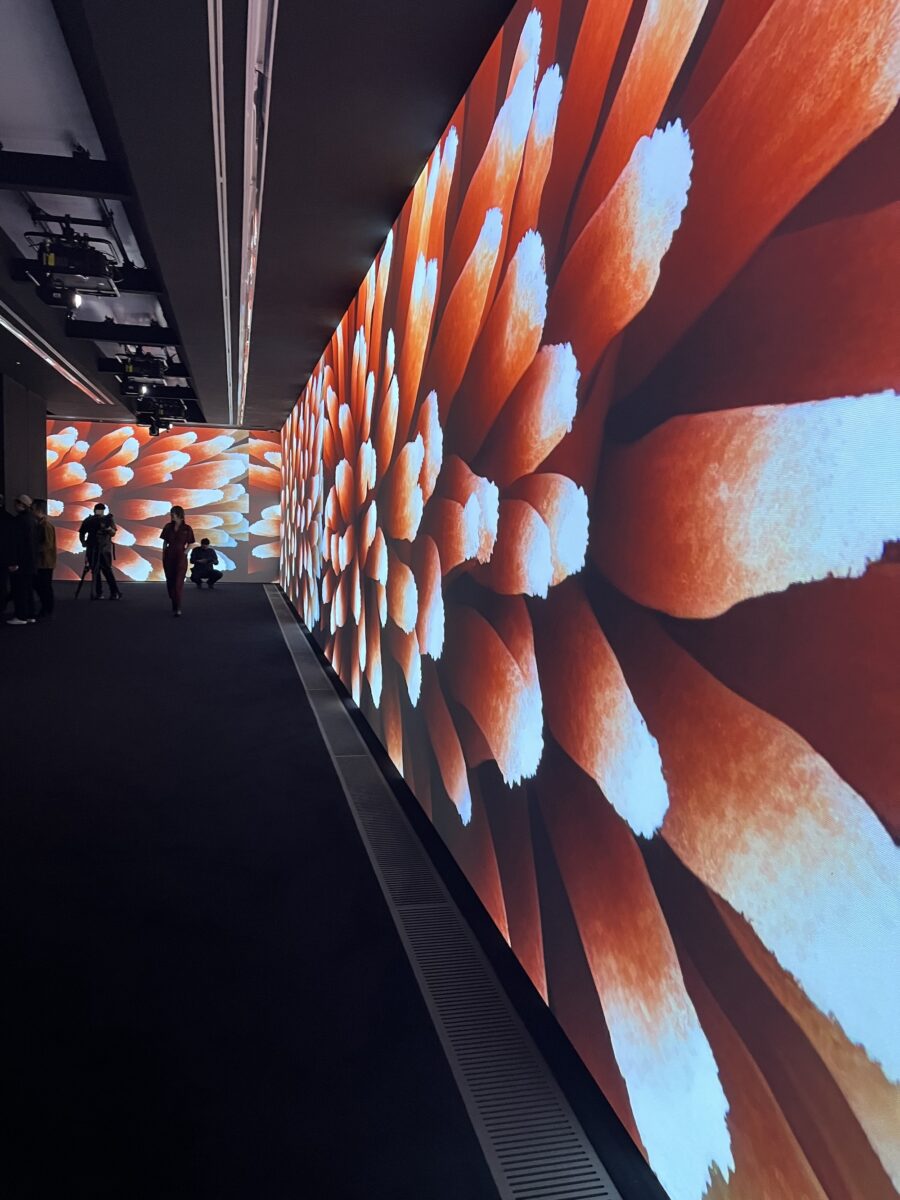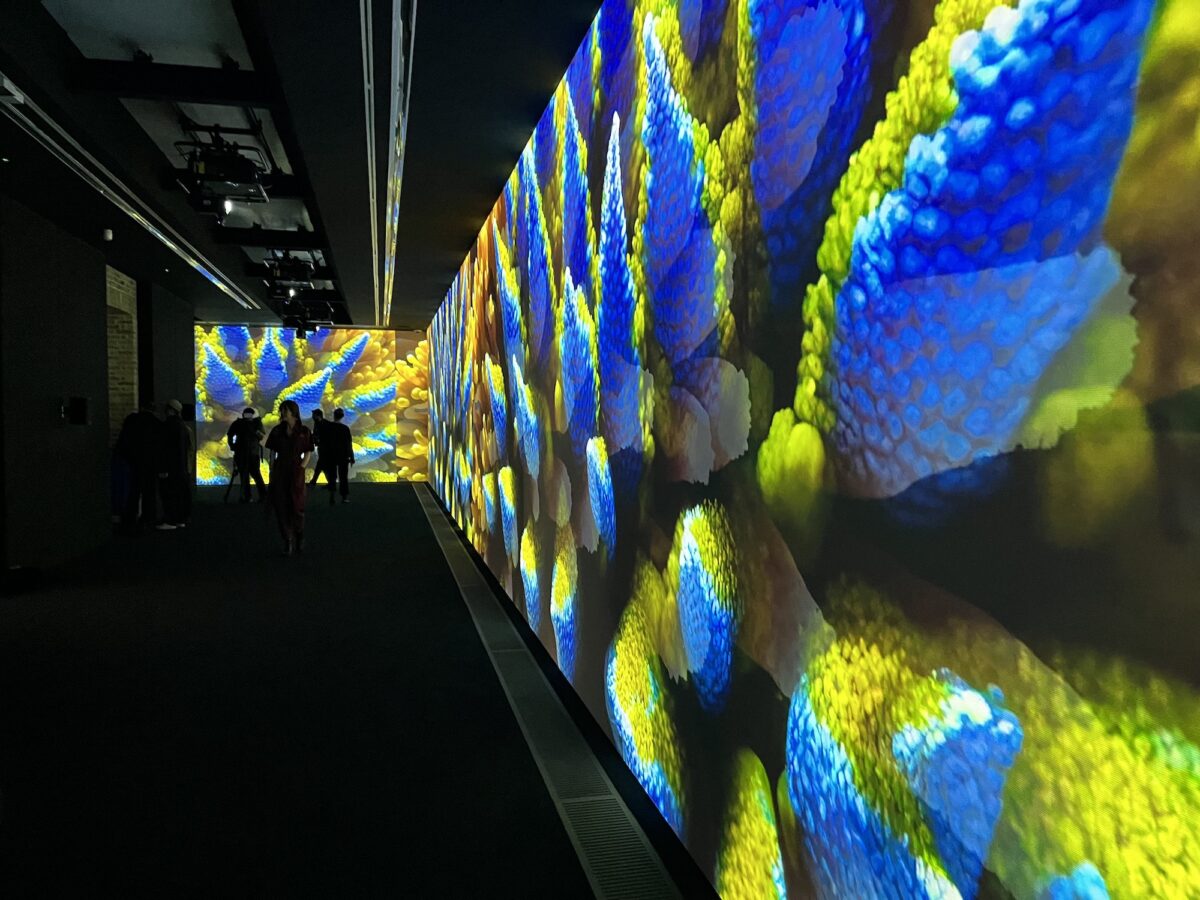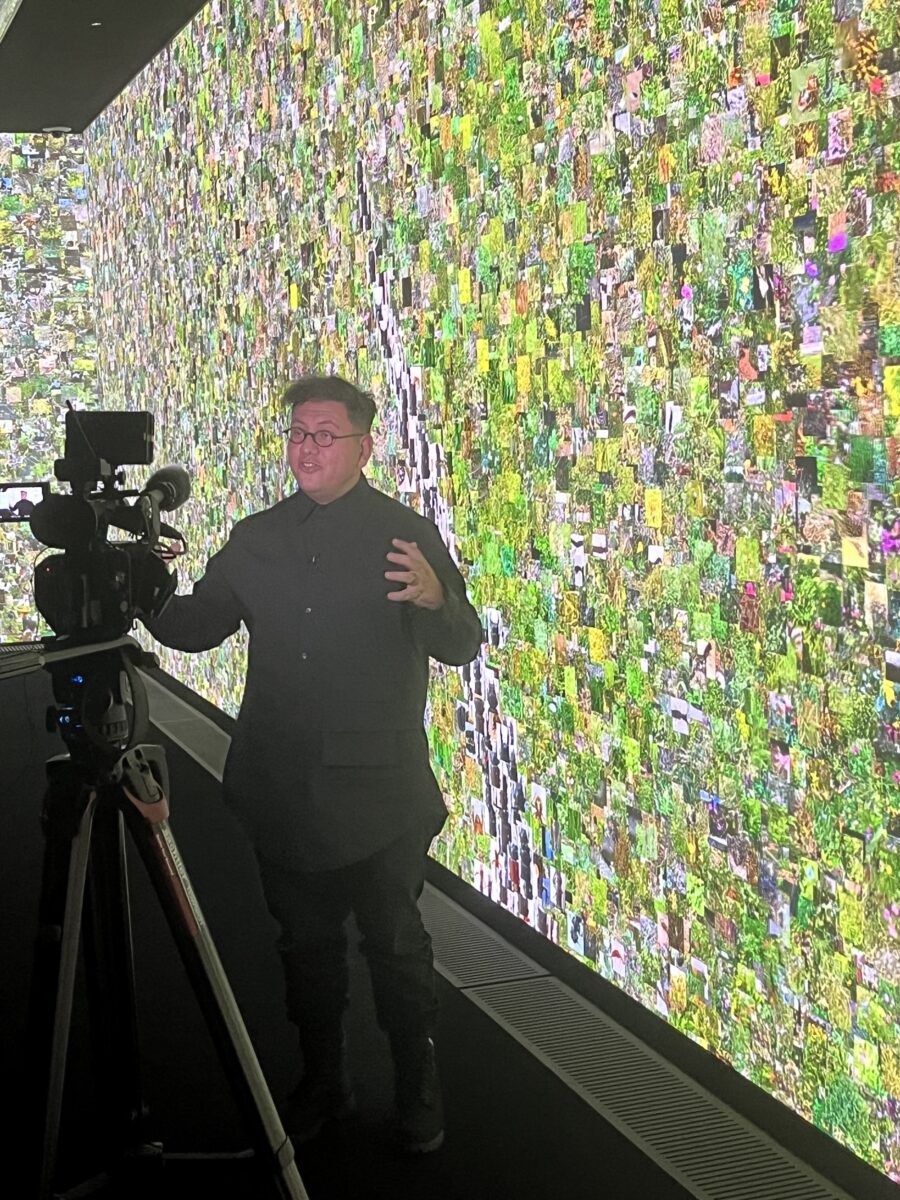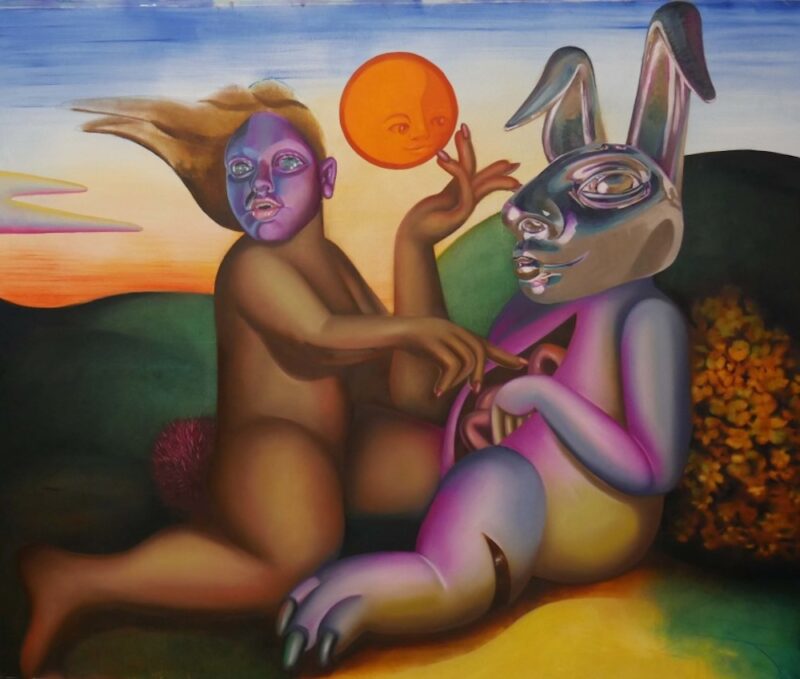Echoes of the Earth: Living Archive, an exhibition of new and recent works by internationally renowned artist, technologist, and pioneer in the aesthetics of artificial intelligence arts, Refik Anadol opens at Serpentine North tomorrow Friday 16th February.
Known for his digital works and large-scale public installations that present real-time generative environments, Anadol’s collaborative creative process with AI plays on human perception. Echoes of the Earth: Living Archive will present years-long experimentation with visual data of coral reefs and rainforests.

The exhibition features Artificial Realities: Coral (2023), an artwork that consists of several chapters culminating in an immersive experience based on the Stable Diffusion model, one of the most advanced technologies of artificial intelligence in image production.
For this artwork, Refik Anadol Studio trained a unique AI model with approximately 5 billion images of corals openly accessible online. Generating abstracted coral images, the AI constructs new visuals and colour combinations based on the dataset. As a multi-channel sound and video experience, Artificial Realities: Coral invites the audience to be immersed in a virtual underwater space.

Anadol’s solo exhibition also features the UK premiere of Living Archive: Nature a new commission which was first be presented at the World Economic Forum 2024 in Davos, Switzerland. Reconfigured for Serpentine North, the installation transforms the gallery into the AI model’s interpretation of a rainforest. The installation features the longest 3D generative AI outputs on nature to date, including data of flora, fungi, and fauna from over 16 rainforest locations globally. Realised through extensive interdisciplinary research, the model utilises the open access information of several venerable institutions, including the Smithsonian Institution, and London’s Natural History Museum, among others. As additional data partners, such as universities, museums, foundations, government entities and libraries join the effort, the model will expand over the coming years.
I am thrilled to bring our Studio’s most ambitious AI Art projects to date to Serpentine this year. A ground-breaking initiative that we call the Large Nature Model, developed by our Studio, stands as the world’s first open-source, generative AI multimodal focused on nature, trained on an extensive and ethically sourced dataset of the natural world. Echoes of the Earth: Living Archive will display multisensory artworks derived from this model, featuring visuals, sound, and scent. Collaborating on such a significant project with my long-time mentor, Hans Ulrich Obrist, with whom I’ve shared many stages discussing the future of AI art, is an immense privilege.
Refik Anadol

Taking the data that surrounds us as primary material, and using a neural network, a method of AI that is inspired by the human brain, as a collaborator, Anadol creates compelling visualisations of our digitised memories and expands the possibilities of interdisciplinary arts. His work explores the meaning of humanity in the era of artificial intelligence as well as the challenges that ubiquitous computing has brought forth. He investigates the profound ways in which the dominance of technology in our daily lives alters our perception and experience of time and space.
Refik Anadol brings art, science and technology together to create generative, immersive environments that fascinate, educate and enchant audiences. This show kicks off a year of research and projects by the Serpentine Arts Technologies department focused on AI, and we could not be more pleased than to collaborate with him.
Bettina Korek, CEO, and Hans Ulrich Obrist, Artistic Director, Serpentine,
The exhibition forms part of the New Alliances strand of the Serpentine programme which aims to widen audiences through engagement and collaborations. Echoes of the Earth: Living Archive is presented in collaboration with 1OF1, led by patron and philanthropist Ryan Zurrer, which partners with forward-thinking artists and institutions by contextualising and supporting art of the digital age.
Echoes of the Earth: Living Archive is curated by Claude Adjil, Curator at Large, with Liz Stumpf, Assistant Curator and produced by Brittany Stewart, Creative Producer and Halime Özdemir, Production Manager.
REFIK ANADOL – ECHOES OF THE EARTH: LIVING ARCHIVE, 16th February – 7th April, Serpentine North
About the artist

Refik Anadol (b. 1985, Istanbul, Turkey) established Refik Anadol Studio in Los Angeles, USA, in 2014. The Studio’s research practice centres around discovering and developing trailblazing approaches to data narratives. Anadol also teaches at UCLA’s Department of Design Media Arts from which he obtained his Master of Fine Arts.
By proposing the possibility of “post-digital architecture,” Anadol invites his audience to imagine alternative realities by redefining the functionalities of both interior and exterior architectural elements. He tackles this by moving beyond the integration of media into built forms and translating the logic of a new media technology into art and design.
His works are included in the permanent collections of the Museum of Modern Art, New York; Istanbul Museum of Modern Art; and the National Gallery of Victoria, Melbourne. Anadol has participated in Venice’s Architecture Biennial (2021); NGV Triennial in Melbourne (2020); Ars Electronica Linz (2017); and Istanbul Biennial (2015). His works have widely been presented internationally, including recent exhibitions at Kunsthal Rotterdam (2023); Arken Museum of Modern Art (2023); ArtScience Museum, Singapore (2023); Kunstpalast, Düsseldorf (2023); Espoo Museum of Modern Art (2022-23); Centre Pompidou-Metz (2022); Hammer Museum, Los Angeles (2022); and Pinakothek der Moderne, Munich (2022).
Refik Anadol’s global projects have received a number of awards and prizes including the Lorenzo il Magnifico Lifetime Achievement Award for New Media Art, Microsoft Research’s Best Vision Award, iF Gold Award, D&AD Pencil Award, German Design Award, UCLA Art+Architecture Moss Award, Columbia University’s Breakthrough in Storytelling Award, University of California Institute for Research in the Arts Award, SEGD Global Design Award, and Google’s Artists and Machine Intelligence Artist Residency Award.
A pioneer in his field, and the first to use artificial intelligence in a public artwork, Anadol has partnered with teams at Microsoft, Google, NVIDIA, Panasonic, NASA/JPL, Intel, IBM, Siemens, Epson, MIT, UCLA, Harvard University, Imperial College, Stanford University, and UCSF, to apply the latest, cutting-edge science, research and technologies to his work.
Living Architecture: Casa Batlló, inspired by Antoni Gaudí’s building in Barcelona, Spain is one of Anadol’s most significant public art projects. The piece was displayed on a large media screen in New York’s iconic Rockefeller Plaza with a simultaneous live projection mapping performance on the actual facade of Casa Batlló which was viewed by a crowd of nearly 50,000 people.







